The once online-only brand continues its expansion into brick-and-mortar stores by catering to consumers with personalized touches.
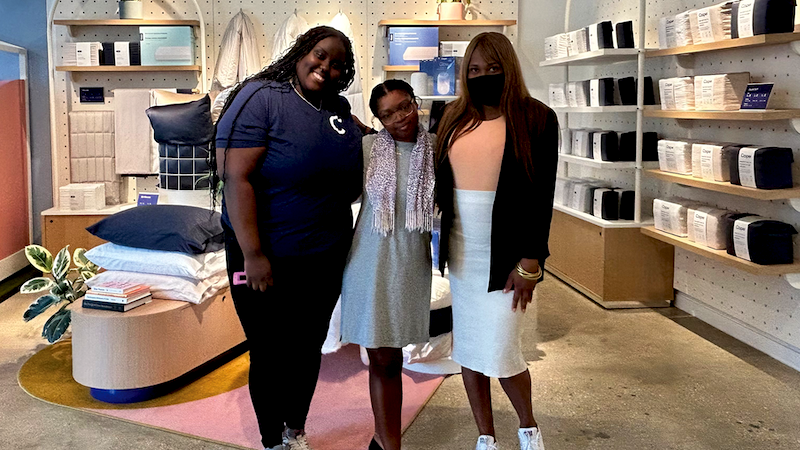
In the mid-2010s, Casper’s direct-to-consumer products fueled enthusiasm for boxed beds. Now a decade after its founding, the company is still evolving and, lately, that means refining its approach to retail. Although online sales and marketing are still a crucial part of Casper’s overall strategy, in recent years the company has created a brick-and-mortar footprint.
In 2021, Casper opened its first permanent store in New York City (also home to its headquarters) and currently has 62 retail locations across the United States. Sleep Savvy visited its bustling H Street location in Washington, D.C., to see how the company is expanding from its DTC roots. We also interviewed Casper’s director of retail, Doug Atchison, and its director of visual merchandising, Ben McCarthy, to learn about Casper’s vision for the future and their tips for retailers of any size.
Elevate Your Sleep: Casper’s Newest Offerings
Casper has spent the better part of 2024 — its 10th year in business — refreshing its brand. At the January Las Vegas Market, the company made twin introductions. The first was its new CEO Joe Megibow, a sleep products veteran formerly with Purple. Megibow’s debut at market coincided with a preview of Casper’s new product lineup. Officially launched in late February, the lineup includes Casper One ($875 to $1,745), an all-foam mattress topped with a layer of Breathe Flex Foam; Casper Dream ($1,495 to $1,745), which pairs responsive foam with individually pocketed coils; and Casper’s Dream Max, which features the company’s foam Zoned Support Max ($2,495 to $3,875). All prices are suggested retail for mattress only.
“Any way retailers can bring a touch of the home into the store goes a long way because shopping for a mattress or bedding is so intimate.”
On the cooling side, hybrid mattresses Casper Snow ($1,875 to $3,125) and Casper Snow Max ($3,125 to $4,625) feature phase- change material and Casper’s HeatDelete bands which, according to the company, “continuously pull heat and humidity away for 12 or more hours.”
Behind the Scenes: A Look Inside a Casper Store
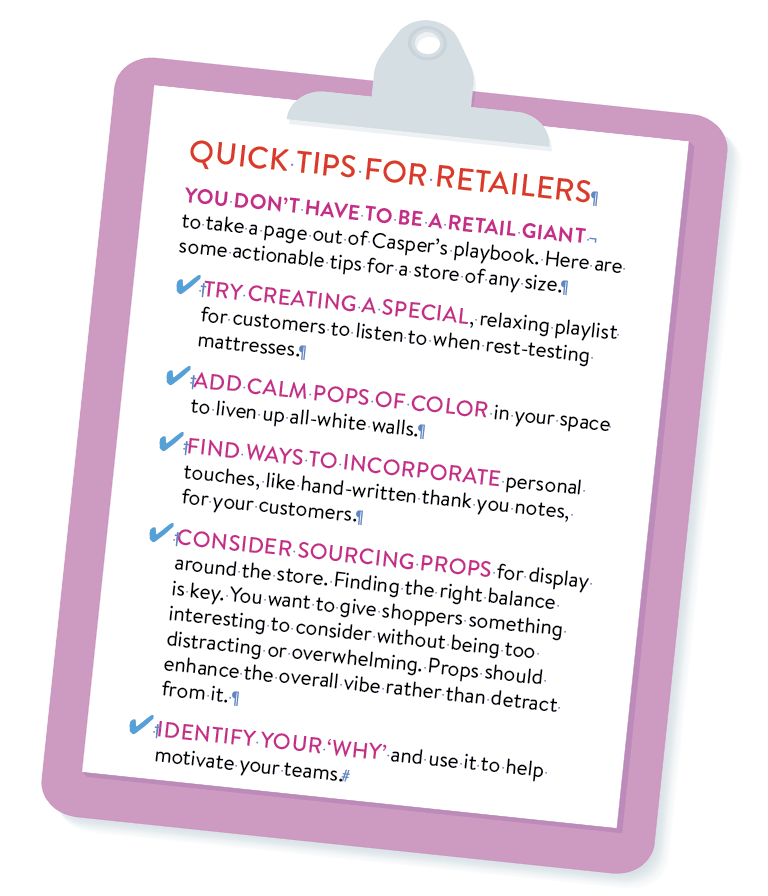
At Casper’s Washington, D.C., location, the experience goes like this. First, a warm greeting from the employees. On the day we visited, we were welcomed by three: Laura Nash and Sascha Gilmore, store managers, and Lacey Veney, supervisor. The H Street location houses all five of Casper’s new models, in addition to accessories, including sheets, dog beds, robes and glow lights.
“Our product comes right off the shelf,” Nash says. “You can take it home with you if you like,” she says, highlighting the store’s inventory. See an unboxed Casper Glow light sitting on a shelf? Feel free to pick it up and take a closer look. Swaths of sheets hang from a display that customers can touch to determine which one – or ones – they like best. Feeling tired? Take a nap. That’s right, Casper offers nap appointments, which guests can book online at Casper.com in 30- and 45-minute increments. Then, depending on the mattress they want to try, they can cozy up in one of the store’s trial bedrooms.
“We try to curate that experience for our guests,” Nash says. “We’ll set them up with the correct pillow, offer a beverage and make it special to them in some way so they can enjoy, relax and feel comfortable.” At Casper, a personalized experience is key.
Designing the Future of Sleep: Casper’s Retail Aesthetic
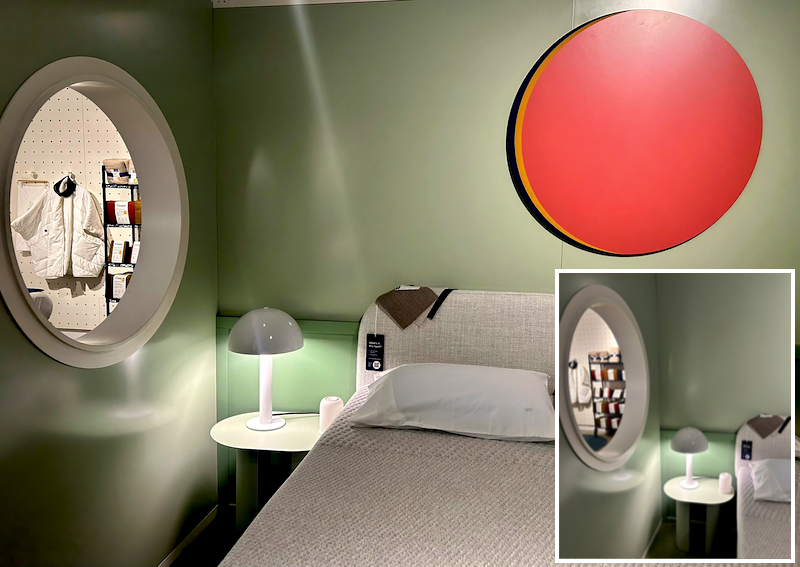
Overall, mattress stores tend to be associated with stark interiors. At Casper’s H Street store, clever pops of color add brightness without overwhelming the customer.
“I think traditionally in this category, it’s about a big white box and fitting a ton of mattresses in,” says Ben McCarthy, director of visual merchandising for Casper. “But any way retailers can bring a touch of the home into the store goes a long way because shopping for a mattress or bedding is so intimate.”
“Store design is a statement,” adds Doug Atchison, director of retail for Casper. “We think about that first impression people have when they come into a store. How can we make our message clear that our products are going to benefit you from a health standpoint?” Atchison says he tries to put himself in a customer’s shoes and asks himself, if he were walking in the door, what would he think? He tries to preserve as much open space on the floor as possible and keep messaging concise.
Although not every retailer has the scale or reach of Casper, McCarthy has visual merchandising advice anyone could implement.
“We’ve been talking a lot lately about the feeling you have when you have a beautifully made bed and what it feels like to jump into that bed,” McCarthy says. “How could that translate into the retail experience? It’s not just about the product. How do we bring that cozy feeling into the selling ceremony, as well?”
McCarthy, who has been with the sleep products company for four years, has overseen a fair amount of change during his time, beginning with Casper’s expansion from DTC e-commerce to traditional retail channels. “We’re in a great position right now of learning and testing what the future could be,” McCarthy says.
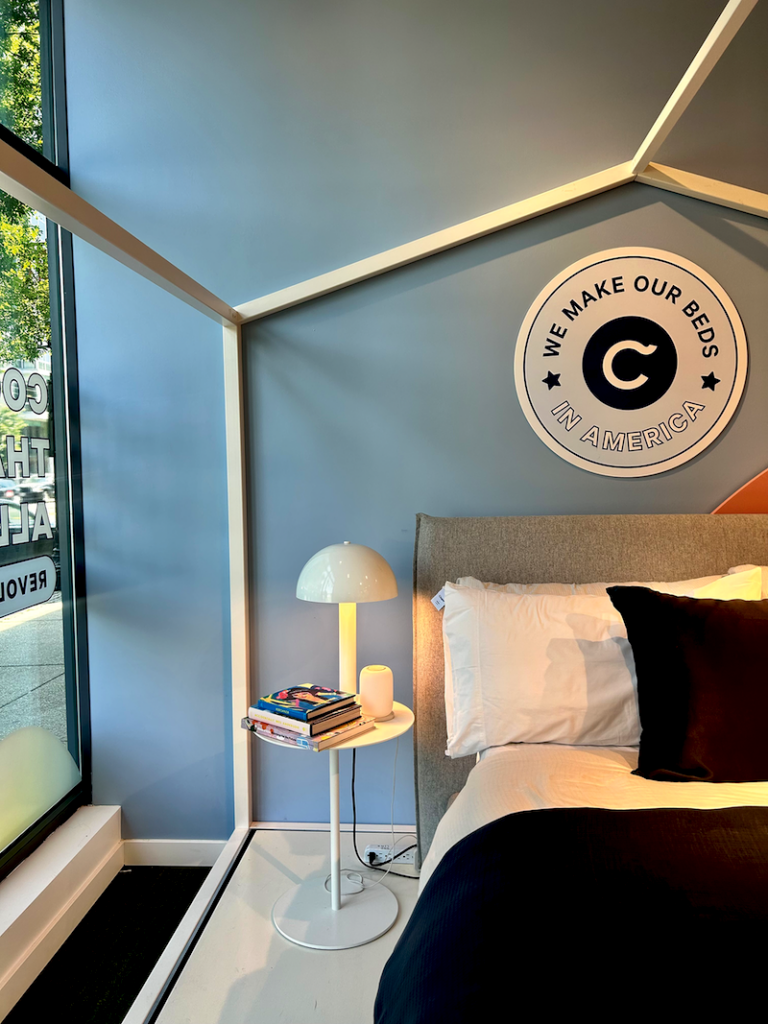
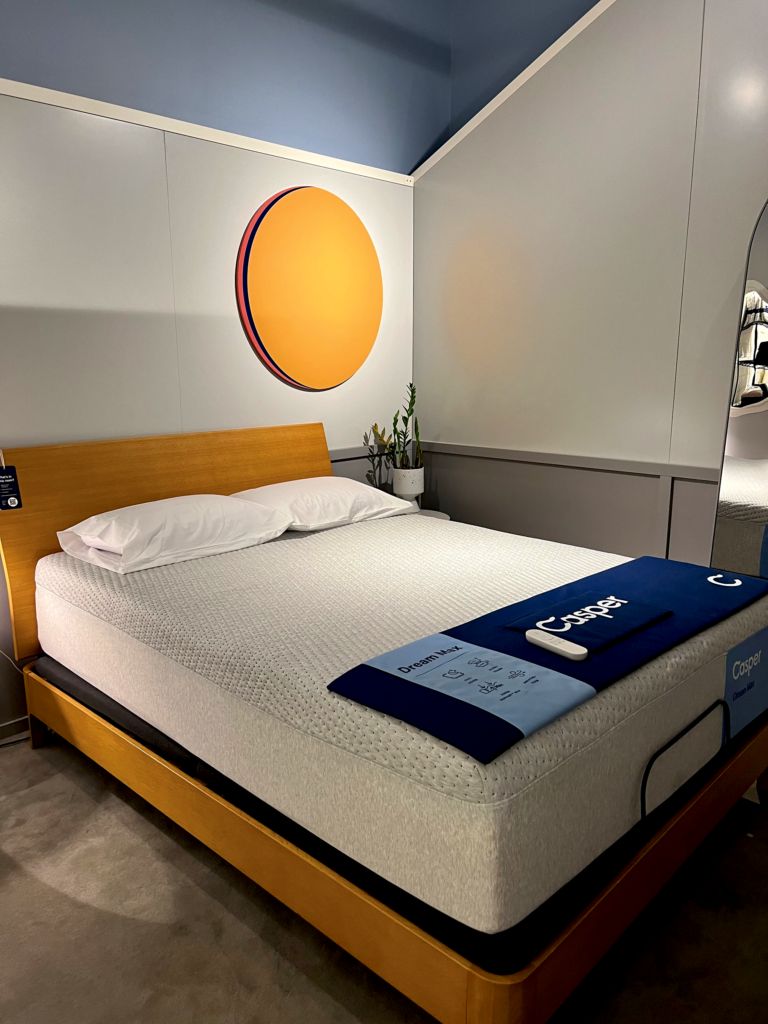
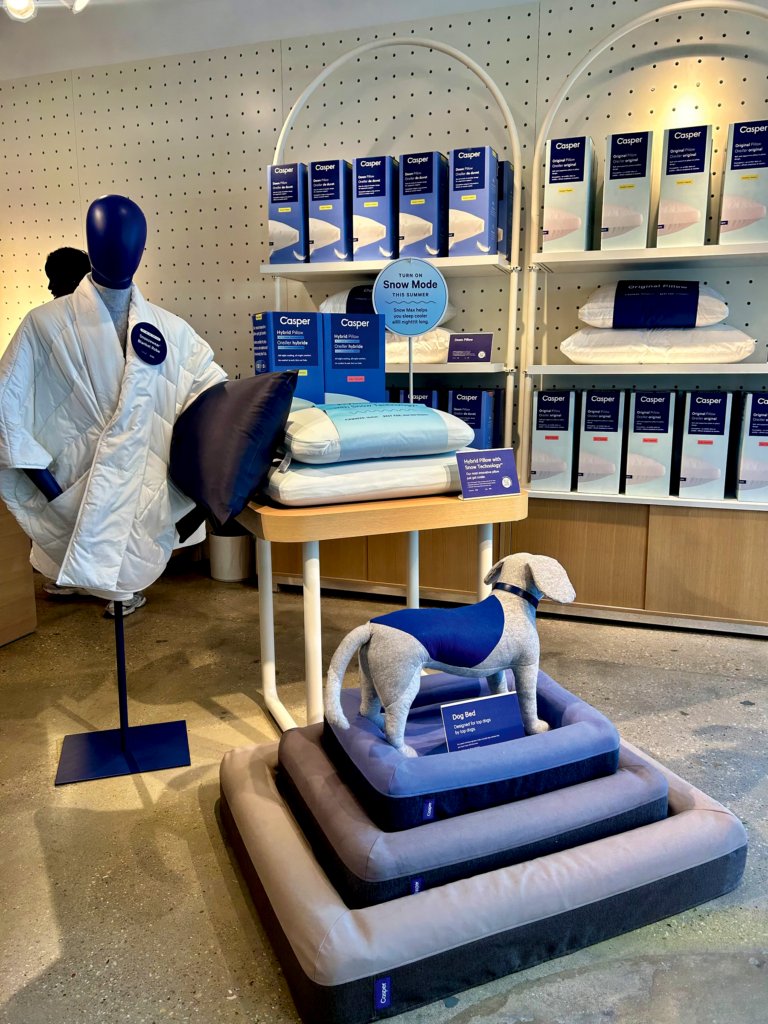
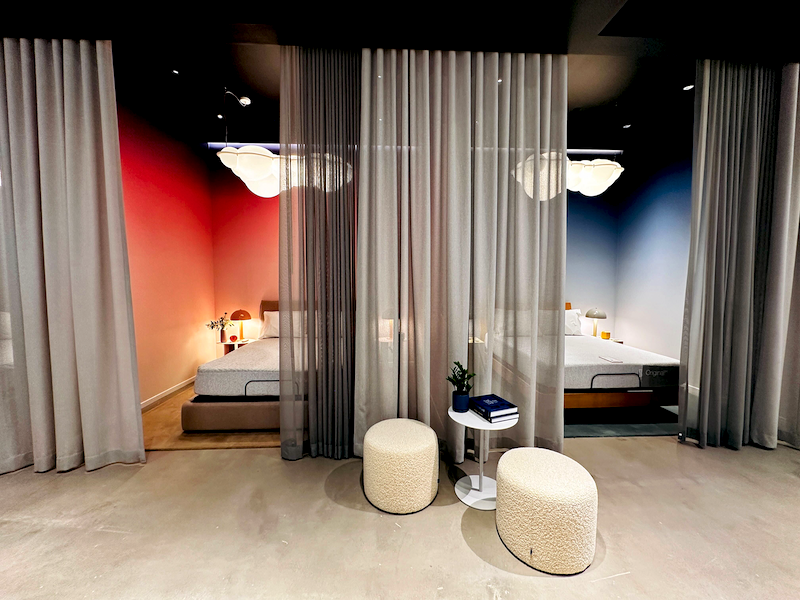
For example, its store in Costa Mesa, California, unveiled a refreshed design earlier this year. The store includes a Snooze Bar (a dedicated consultation area for Casper’s sleep specialists to answer questions) and a Bedroom DZzzign Center where customers or interior designers can virtually design a sleep setup using any products in Casper’s line.
“We’re thinking of how we could even elevate the experience through all the senses like sound, touch, feeling, scent,” McCarthy says. In the Costa Mesa store, Casper has curated special playlists for customers to listen to during their nap appointments. “We’re trying to push the envelope to provide the customer with a nontraditional mattress experience,” he adds. The design of the Costa Mesa store will be further tweaked for Casper’s newest outpost in Austin, Texas, scheduled to open in early 2025.
“One thing I love about Casper is — we call it ‘zing’ — is to bring zing, not only to our customer, but in our day-to-day approach to work, too,” McCarthy says.
The ‘Why’ Behind The Retail Strategy
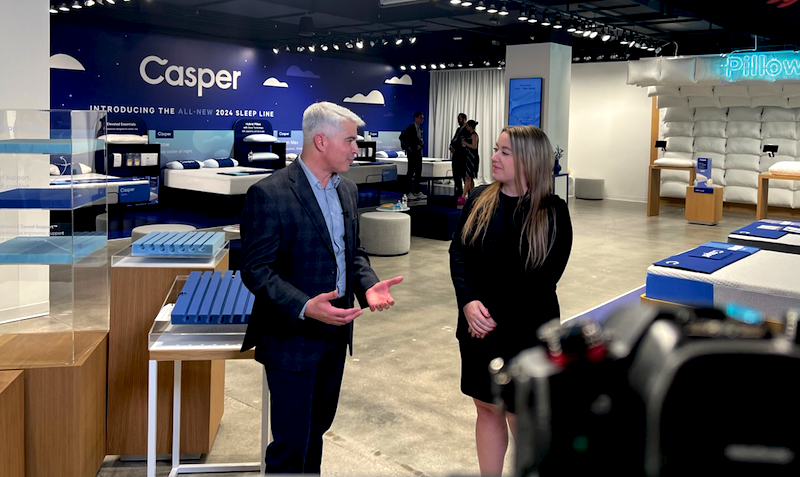
Speaking about the brand’s evolution from DTC to its expansion into brick-and-mortar stores, Atchison says: “The reality is to be successful in the mattress and bedding world, you have to be tactile. You have to be somewhere that people can touch and feel it. For us, we’re always going to have our (DTC) roots.”
According to Atchison, Casper’s 62 stores across the United States are a “relatively small fleet” considering the number of large to midsize cities in the country. In the future, the brand will continue to open new locations but growing in a “responsible, thoughtful way” is important, he adds.
“I’ve launched retail brands before and I’ve gone from having zero stores to a small fleet,” he says. “I think the thing that I’ve found most important
is making sure there is a ‘why’ for your teams to hold on to.”
That “why” means something different for every retailer and is incumbent upon them to figure out, but Atchison offers advice: “There are so many ways you can go with stores, but sometimes I think people forget the ‘why’ of it. I think if you can give people a bigger picture so they feel like they’re part of something bigger than just a store, that’s something they can get passionate about. That’s what sells and drives retail success.”
The Science Behind Casper’s Sales Success
Another part of Casper’s selling strategy is acknowledging how much the internet has changed customer behavior. Atchison says that by the time most customers set foot in one of Casper’s stores, they’ve done some preliminary shopping and research online and likely have almost reached a decision.
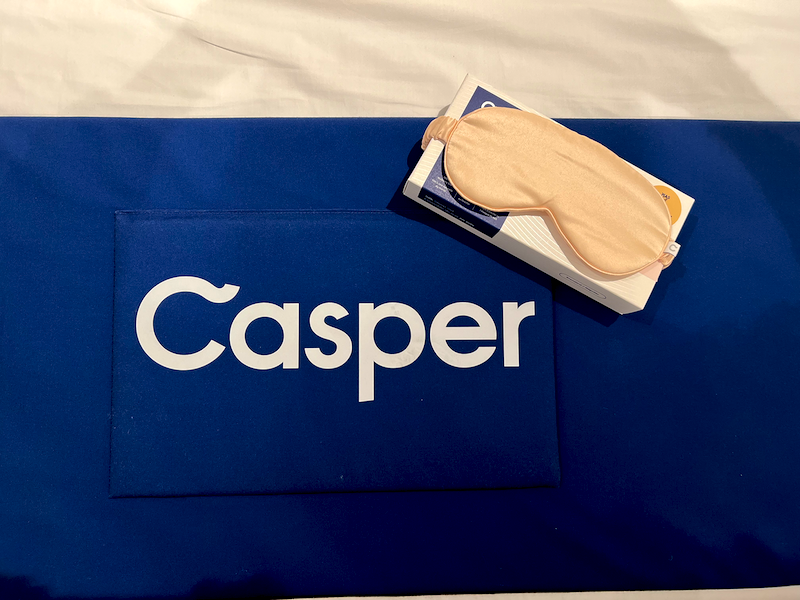
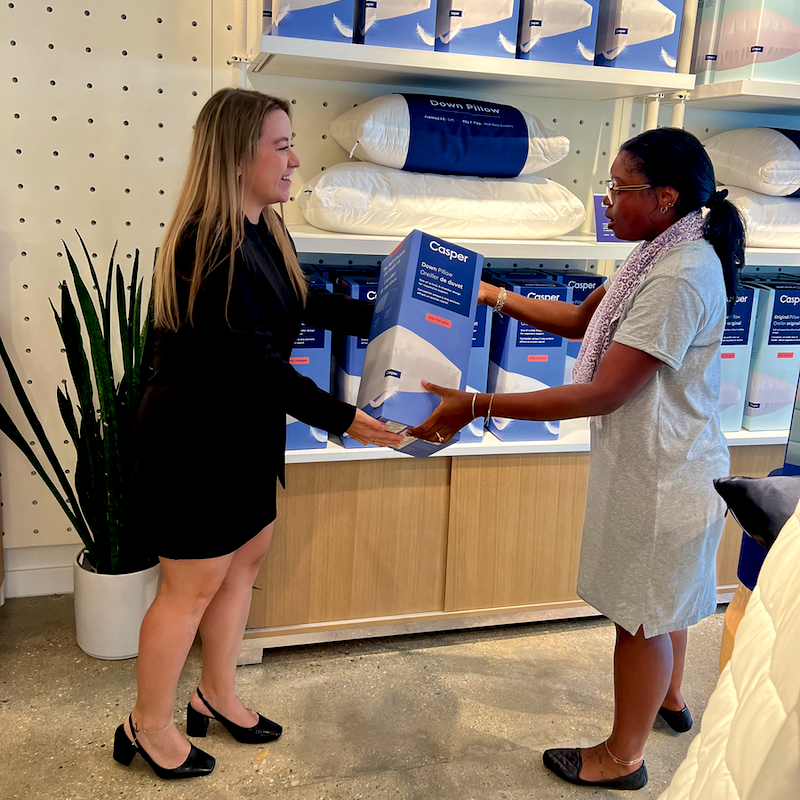
“They don’t necessarily need somebody to reiterate the features and benefits they’ve seen on the website,” he says. “What they need is somebody to guide them through and help reaffirm, ‘Hey, the choice you’re making is probably right.’ ” He says that approach, combined with retail sales associates helping customers understand how important sleep is from a health and wellness perspective, is essential.
According to Atchison, before the pandemic, sleep wellness was one of the main messages in sleep products. Since then, messaging has shifted toward a focus on technology or promotions and discounts. Instead, Casper wants to highlight the importance of sleep from a health standpoint, one of the company’s “whys.”
“We’re trying to bring back that meaningful reason and get down to the why of it,” he says. “The ‘why’ isn’t all the cool things a mattress can do that they didn’t do five or six years ago. It’s that we want people to be able to live better lives.”
Read the latest on Casper: Carpenter Co. Acquires Casper Sleep.







